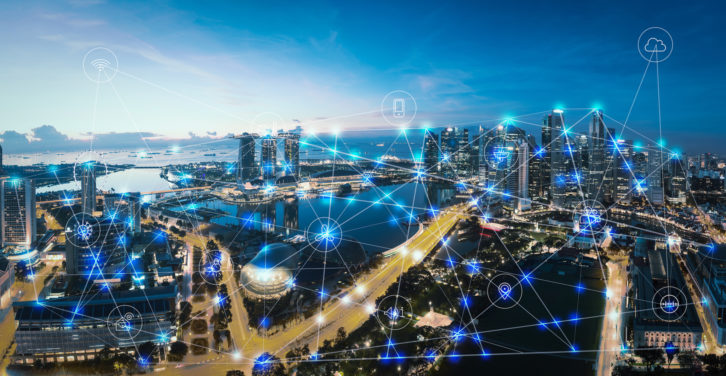
We encounter artificial intelligence in our daily tasks when we use talk-to-text and photo tagging technology. We see it contributing to cutting-edge innovations: precision medicine, injury prediction and autonomous cars. By allowing machines to learn, reason, act and adapt in the real world, artificial intelligence and machine learning are helping businesses unlock deeper levels of knowledge and insights from massive amounts of data. It is operating behind the scenes in many mission-critical applications, in the air traffic control sector, for instance, artificial intelligence is being used to help controllers manage aircraft and ground vehicle movements in busy airports and across congested skies. It is trusted and valuable and clearly making its mark.
Artificial intelligence will, in most probability, affect all our lives dramatically. Theoretical physicist, Professor Jim Al-Khalili believes that artificial intelligence is a technology that is set to radically change the way we live and will have far greater impact than the introduction of the internet and in a much shorter timescale. Considering that the internet has only been around for 30 years or so, this is quite a profound belief.
We are only at the very earliest stages of development of artificial intelligence. It is not yet fully defined. Even the descriptive term artificial intelligence does not yet have a universally accepted meaning. “AI is fast-becoming a catch-all phrase to make whatever you’re doing sound smarter. These days, it is used to describe all manner of technologies from basic automation to the actions of robots in The Terminator,” says Ahmed Helmy, CTO, Avaya International. Even so, it is undoubtedly adding value to industrial offerings and propositions. “The practical uses of AI may not yet deliver all-knowing humanoid robots, but they’re certainly driving value across a range of business functions; and they’re being deployed very widely.”
Forward thinking
However, as an industry that is deeply involved in integrating disparate technologies (data, audio, video, collaboration, building services, etc) to create exciting solutions, we must look ahead to understand how artificial intelligence, whatever we understand it to mean, can add value to the systems created by the AV/IT system integration community. And we should look deeply into the concerns that the increasing usage of AI will bring to users and system operators. It’s not just the enormous potential opened by AI we must consider; this new technology could present a whole new security threat in the coming years that must be planned for and overcome.
Artificial intelligence, or more specifically, the data collection and analysis elements of it, is particularly useful in expanding systems to enable them to operate over a larger scale. We are beginning to encounter AV installations that interchange data across whole buildings as building management systems combine data from environmental sensors, lighting, presence detectors and HVAC to create intelligent buildings. Other detection systems, such as facial recognition, movement trackers and mobile device detectors are being used to change content and move and manage audiences and customers in public locations: in shopping centres, fast food outlets and stadiums for example. Again using artificial intelligence and advanced data analysis.
People are becoming far more expectant of technology to track their movements and match their current location into local services. That experience is turning into an expectation and it is spreading to the workplace. “In the office, workers expect their diaries to link to their email accounts and further on to site services within a building,” says Sam Woodward, customer education leader EA, Lutron. “Intelligent systems can automate meeting invitations, appointment schedules and reminders, room configuration, lighting and AV equipment setup within a single, rich environment for users of meeting rooms and conference rooms, making it simple for them to use the in–house equipment and enabling them to become more efficient. That’s just the start. Connecting these parameters together and combining them into wider building management systems allows the whole office to be managed so that heating, lighting and power can be automatically and intelligently controlled on a site-wide basis. In addition, finely detailed information can be collected over time and analysed to assess and fine-tune the services in the building, allowing it to be made more efficient and economic.”
“The sky is the limit if there is a way of communicating the potential ROI for a specific technological investment”
These types of system are already well-established and common, with several multinational organisations, including Honeywell, Schneider and Siemens actively developing and selling comprehensive, all-encompassing, AI-based building controllers. Some enlightened AV manufacturers and system integrators are contributing to this environment and participating in programmes to develop new ideas to produce better buildings that deliver greater comfort to occupants and more efficient operation for owners.
Applications are everywhere, and boundless. As Yiannis Cabolis, director, technical innovation, Electrosonic, points out: “Large integrated smart systems that are relevant to transportation management and advertising can utilise AI’s data analytics capabilities to provide real-time data while anticipating potential changes given the data acquired. We can add and open additional traffic lanes, open toll-booths, synchronise traffic lights, add or reduce more public transportation at peak times while at the same time profiling those walking, driving or riding on public transportation so we can place the right type of product advertising on billboards and store fronts and provide feedback to local fast-food chains of potential food demands.
“These concepts cannot be achieved without artificial intelligence. The sky is the limit if there is a way of communicating the potential ROI for a specific technological investment,” he says. And it will evolve into areas we have only just started thinking about. “If we take this a step further we can extend this data into systems that are utilised when things go drastically wrong, an emergency situation, for example. First responders can be dispatched even before the first emergency call comes into the call centre. The advantages are massive although the deployment and the topology of such a system would be colossal; but it’s where AI can take us.”






